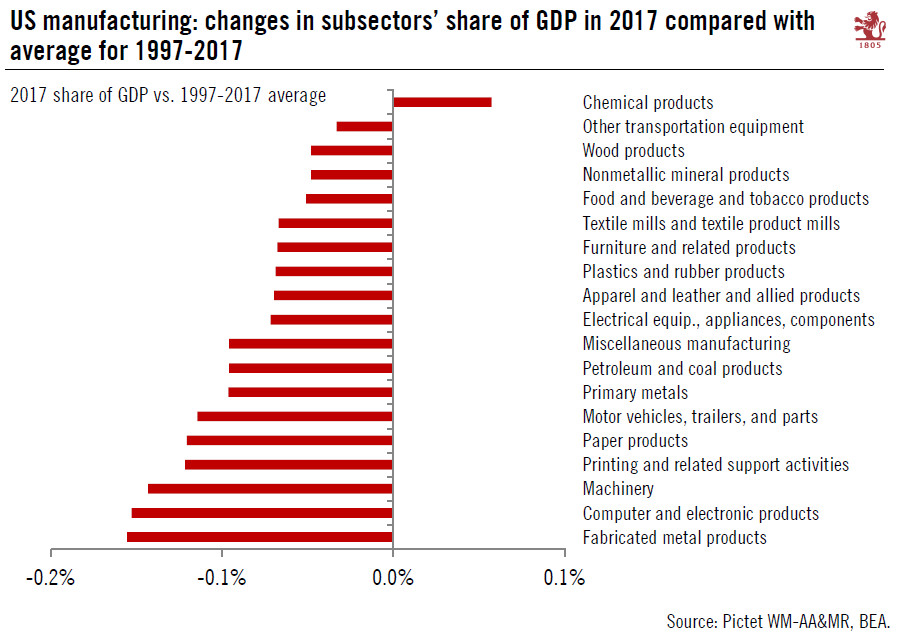The manufacturing sector’s share of the US economy continues to decline.The Bureau of Economic Analysis recently released data for US GDP by industry for Q4 2017, providing a good opportunity to examine how US manufacturing is doing. The answer is: still not so well.Manufacturing accounted for 11.6% of US GDP in Q4 2017, the same as a year earlier but well below levels in previous years (e.g., 16.1% in 1997, 12.8% in 2007). In other words, there is still no sign of a manufacturing ‘renaissance’.Delving further into the data by subsector, one notes that the erosion in US manufacturing has been broad based. If we look at changes in sub-sectors’ weighting in the US economy, we can see that most sub-sectors have seen declines in their share of GDP (see chart). The only exception is the
Topics:
Thomas Costerg considers the following as important: Macroview
This could be interesting, too:
Cesar Perez Ruiz writes Weekly View – Big Splits
Cesar Perez Ruiz writes Weekly View – Central Bank Halloween
Cesar Perez Ruiz writes Weekly View – Widening bottlenecks
Cesar Perez Ruiz writes Weekly View – Debt ceiling deadline postponed
The manufacturing sector’s share of the US economy continues to decline.
The Bureau of Economic Analysis recently released data for US GDP by industry for Q4 2017, providing a good opportunity to examine how US manufacturing is doing. The answer is: still not so well.
Manufacturing accounted for 11.6% of US GDP in Q4 2017, the same as a year earlier but well below levels in previous years (e.g., 16.1% in 1997, 12.8% in 2007). In other words, there is still no sign of a manufacturing ‘renaissance’.
Delving further into the data by subsector, one notes that the erosion in US manufacturing has been broad based. If we look at changes in sub-sectors’ weighting in the US economy, we can see that most sub-sectors have seen declines in their share of GDP (see chart). The only exception is the chemical industry, probably helped by the domestic energy boom. Another relatively resilient sector is the ‘other transportation equipment’ category, which encompasses airplane production.
The biggest drops were in fabricated metals (its share was 0.8% of GDP in 2017 versus 1.3% in 2007), electronic products (1.5% of GDP in 2017 versus 2.3% in 2007) and machinery (0.8% of GDP versus 1.2% in 2007).
President Trump’s protectionist push intends to support US manufacturing as he believes the culprit for its erosion is due to “unfair” foreign competition. But the risk is that it could end up doing more harm than good.

